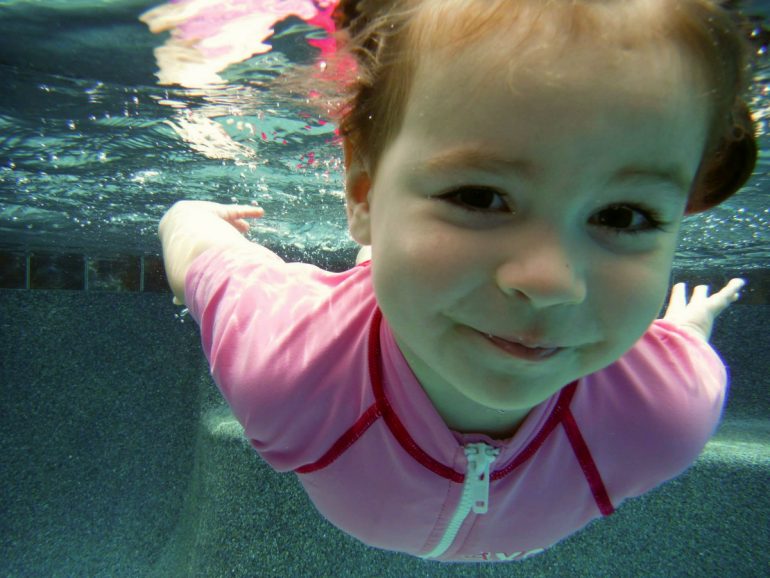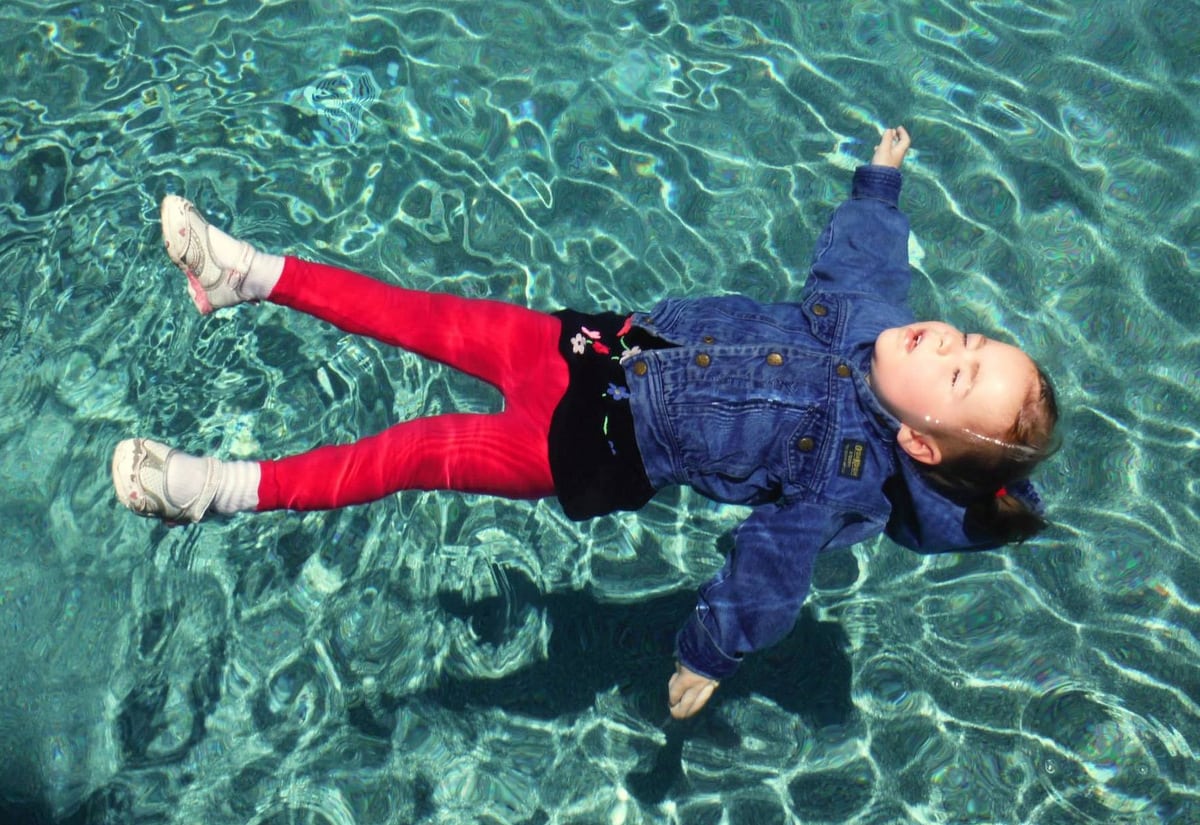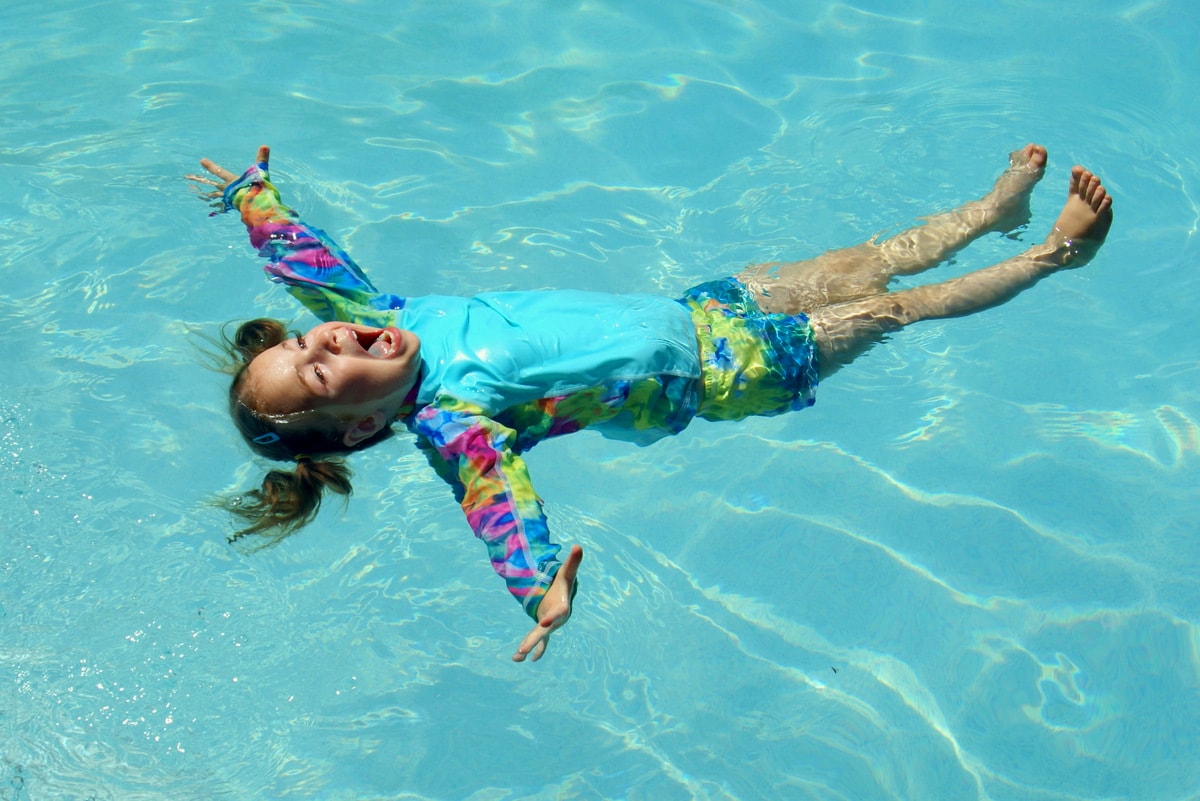Even if you don’t have a pool in your backyard, making sure your child can swim is vital.
There are bodies of water everywhere on this planet — lakes and oceans, brooks and springs, rivers and fountains — as well as swimming pools at hotels and community centers. As a parent or grandparent, you want your darling kiddo to be safe at all of them.
The ever-present need for basic water safety is why the ISR self-rescue method being taught to babies, toddlers and preschoolers is so remarkable. It’s a unique program that shows young kids how to survive in the water, and how to get themselves to safety.
While some of the information provided in this article comes directly from Infant Swimming Resource (ISR), this is not a sponsored post. We have seen firsthand how successful these swimming lessons can be, and know how much of a difference they can make.
If you’re on the fence about what kind of swimming lessons to choose for your child, you owe it to yourself — and your little one — to understand your options.
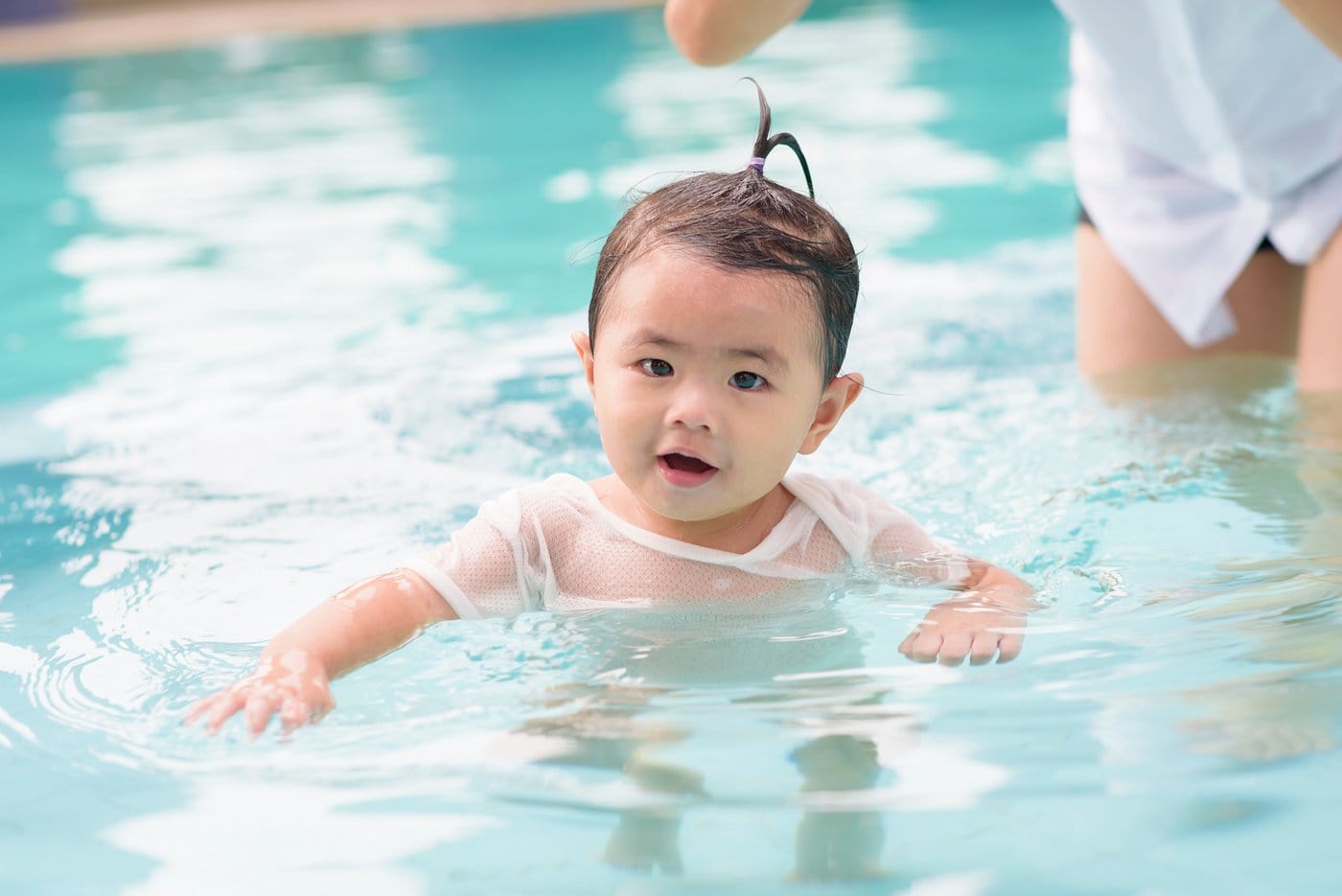
While it’s true that the ISR method does require a 5-days-a-week commitment for several weeks (and lessons are just 10 minutes each), if just one child’s life was saved thanks to the skills learned, it would be a worthwhile experience.
Then once you hear that more than 800 lives have been saved — that number based on the company’s documented success stories — you might realize that now is the time to start getting your child water-safe.
Here’s how the company behind ISR swimming lessons explained what they do.
What is ISR, and how is it different from other swimming programs?
ISR is the product of more than 50 years of ongoing development in the area of aquatic survival instruction for infants and children. ISR’s primary focus is to teach your child to become a productive swimmer, or floater, in any depth of water.
The goal of ISR is that your child becomes an “aquatic problem solver,” and children learn the swim-float-swim sequence so that they could get themselves to safety. The techniques learned will greatly increase your child’s chance of surviving an aquatic accident, even when fully clothed.
Why do you have the children swim in clothes?
Because 86% of children who fall in the water do so fully clothed, we want our students to have experience with such a situation. If a child has experienced the sensations of being in the water in clothing prior to an emergency situation, he or she is less likely to experience panic and be able to focus on the task at hand.
How can you teach babies and young children to swim?
ISR instructors teach infants to swim by honoring each child’s individual strengths and experiences. They understand the fundamentals of the behavioral sciences, child development and of sensori-motor learning as it relates to the acquisition of aquatic survival skills; they use this education to guide each child through the sequence of learning to swim and float.
Do you have children that just can’t learn the skills?
No. Every child can learn. It is the instructor’s job to find the best way to communicate the information so that it makes sense to the child. We set your child up to be successful every time. We start where they are.
One mom’s experience: ISR infant self-rescue swimming lessons
Every summer, story after story appears on the news about a child drowning (or nearly drowning), and moms and dads start to worry: What would happen if my child fell in a pool?
When you’re a parent who lives in a state where it seems like every other house has a swimming pool, that anxiety is ever-present. And if your kiddo is autistic or has other special needs? That’s when stress and concern can turn into out-and-out fear.
Gilbert, Arizona mom Tonya Price wanted to do everything she could to ensure that her two toddlers could survive a fall in the pool. After doing some research, she turned to ISR’s Self-Rescue swimming lessons for young children. The results — for both her autistic son, and her neurotypical daughter — were nothing short of amazing.
Below, Tonya shares her family’s story, photos of what the kids learned, and with two video clips showing the ISR swimming lessons in action.
One mom’s experience with infant self-rescue swimming lessons
How/where did you first hear of ISR?
Someone on Facebook had posted an infant self-rescue swimming lessons video that I couldn’t stop thinking about.
Around the same time, a local friend of mine had a family member (toddler) crawl through their doggie door and nearly drown. The baby had suffered severe brain damage and was on life support. The little girl passed away about two weeks later.
ALSO SEE: Secondary drowning: What is it, and how can it happen?
What was the experience like for you, as a mom, to watch?
It was hard for about the first four days. Both of my babies were crying and not happy. I could tell it was an upset cry, but not a scared cry. They trusted Colleen, their instructor, but they didn’t like what they were having to do.
After the first week, I was amazed at the progress a months-old child could make, in merely 10 minutes a day. I was so proud of how fast they picked it up, and I was very happy that they quickly began to love their daily swim lessons!
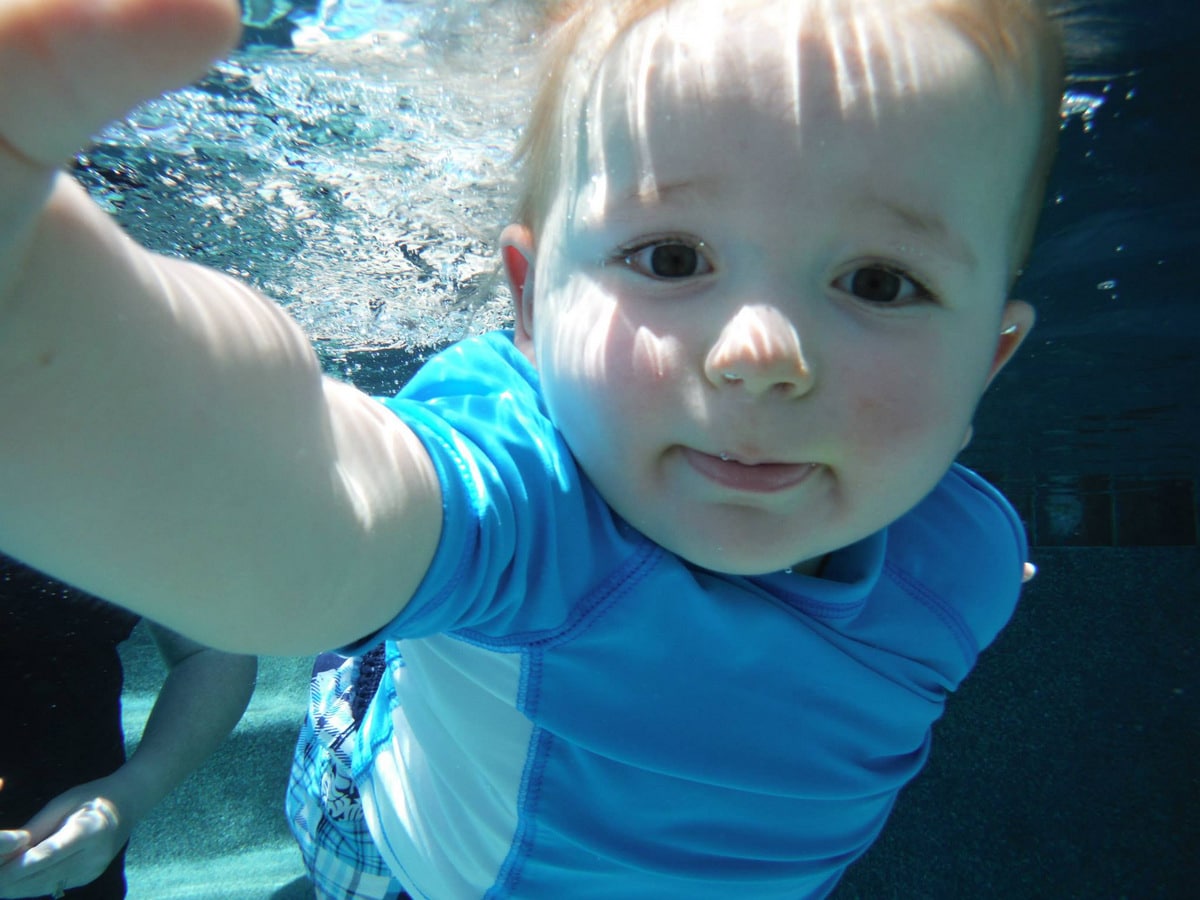
What did you think of the process — and how did your children respond?
The lessons are 10 minutes per day, for 4 to 6 weeks. Abby (2-1/2) went for 5 weeks, while Colton, who was only 1-1/2, went for 6 weeks.
It was a challenge to coordinate the lesson times with their differing nap times. The instructor teaches a different child every 10 minutes, so you have to arrive precisely on time, so your child can begin as soon as the previous child comes out of the water.
Once we got the hang of the routine, we quickly became pros, but ISR is a major commitment that parents make to their children.
Was there much of a difference between how/speed of learning between your two kids?
My 2-1/2-year-old daughter is very verbal, so she was able to listen to the instructions she received. However, my 1-1/2 year son is speech delayed. He was diagnosed with autism a few months after his lessons began.
To my surprise, he seemed to intuitively pick-up the process, and loved to be in the water. He could hold his breath underwater with his mouth wide open. His eyes were always open and he was attentive to what was going on around him.
When we did the refresher lessons a year later, he immediately remembered how to go into his float.
I feel that the younger a child is when they take ISR lessons, the better, because their muscle memory takes over, and they don’t have to even think about it.
Now that they’ve had some training, are you less stressed about the kids being around water?
A few months after our initial ISR lessons, we went on a playdate at a local pool. I thought a family member was watching my 2-year-old, and she thought that I was.
I was talking to some moms and suddenly, in the distance, I saw my daughter in the water with nobody else around. She was floating on her back, just as she had been taught in ISR.
As I swam closer to her, I began to hear her voice calling for someone to “help me.” It broke my heart… but my baby girl was safe. She did exactly as she had learned.
ISR swim lessons were the best investment my husband and I have ever made in our children.
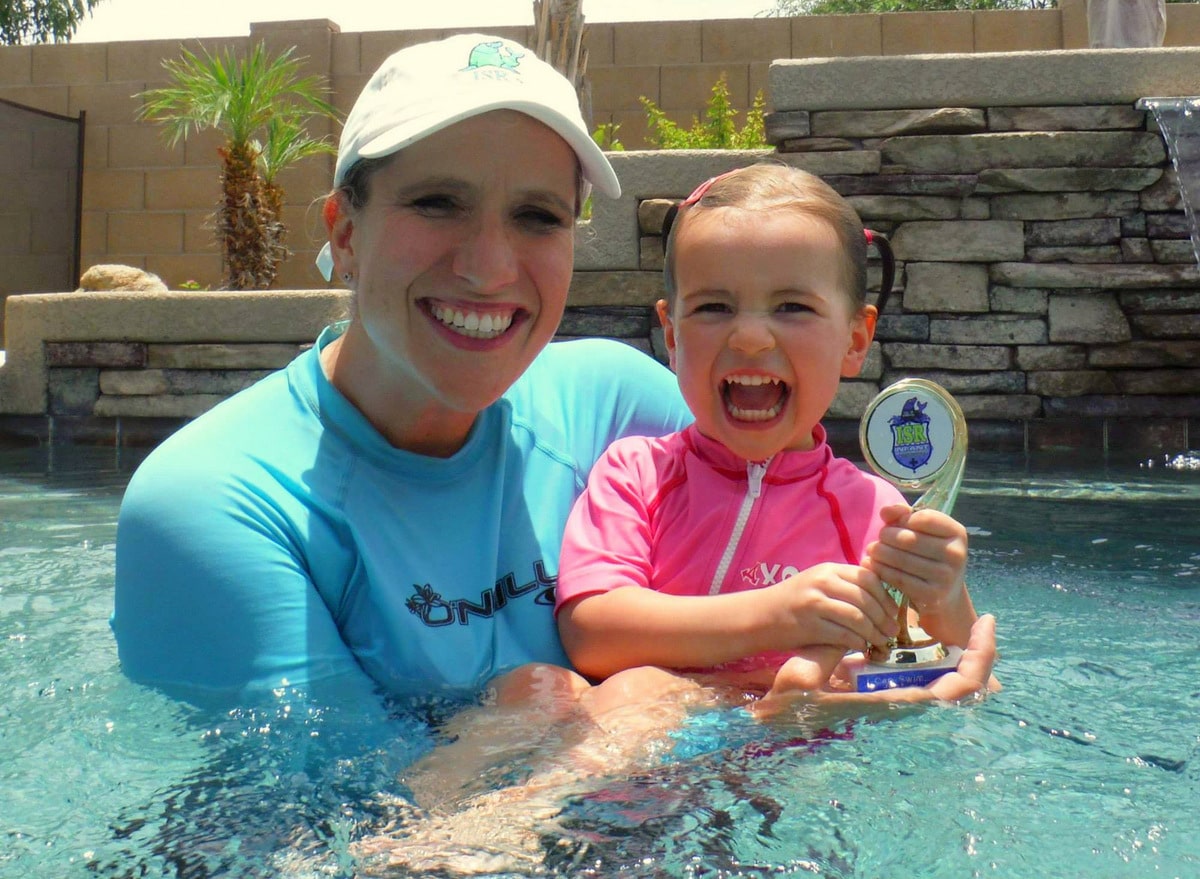
Colton’s swimming skills (non-verbal, autistic)
Abby’s swimming skills (neurotypical toddler)
Video, story — and children — courtesy of Tonya Price in Gilbert, Arizona (ForSaleByTonya.com). Underwater pictures by Colleen Haas

